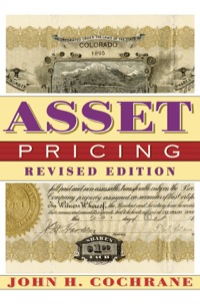Answered step by step
Verified Expert Solution
Question
1 Approved Answer
Assignment Show all calculations for partial credit Chapter 5 Problem: (hint: like P5-10; use your class notes chapter postings and the video for this question
Assignment Show all calculations for partial credit
Chapter 5 Problem: (hint: like P5-10; use your class notes chapter postings and the video for this question for support.)
On December 31, Year 2, P Inc. purchased 80% of the outstanding ordinary shares of S Com-pany for $310,000. At that date, S had ordinary shares of $200,000 and retained earnings of $60,000. In negotiating the purchase price, it was agreed that the assets on Ss statement of financial position were fairly valued except for plant assets, which had a $40,000 excess of fair value over carrying amount. It was also agreed that S had unrecognized intangible assets consisting of trademarks that had an estimated value of $24,000. The plant assets had a remaining useful life of eight years at the acquisition date and the trademarks would be amortized over a 12-year period. Any goodwill arising from this business combination would be tested periodically for impairment. P accounts for its investment using the cost method.
Additional Information:
At December 31, Year 6, an impairment test of Ss goodwill revealed its recoverable amount is $50,000
An impairment test indicated that the trademarks had a recoverable amount of $13,750.
The impairment loss on these assets (goodwill and trademarks) occurred entirely in Year 6.
On December 26, Year 6, P declared dividends of $36,000, while S declared dividends of $20,000.
Amortization expense is reported in selling expenses, while impairment losses are reported in other expenses.
Financial statements for P and S for the year ended December 31, Year 6, were as follows:
STATEMENTS OF FINANCIAL POSITION
December 31, Year 6
P S
Assets
Plant assetsnet $ 230,000 $ 160,000
Investment in Storm 310,000
Other investments 82,000 22,000
Notes receivable 10,000
Inventory 100,000 180,000
Accounts receivable 88,000 160,000
Cash 20,000 30,000
$ 830,000 $ 562,000
Shareholders Equity and Liabilities
Ordinary shares $ 500,000 $ 200,000
Retained earnings 110,000 150,000
Notes payable 130,000 100,000
Other current liabilities 10,000 50,000
Accounts payable 80,000 62,000
$ 830,000 $ 562,000
INCOME STATEMENTS
For the year ended December 31, Year 6
P S
Sales $ 870,000 $ 515,000
Cost of goods sold (638,000) (360,000)
Gross profit $ 232,000 $ 155,000
Selling expenses (22,000) (35,000)
Other expenses (148,000) (72,000)
Interest and dividend income 34,000 2,000
Profit $ 96,000 $ 50,000
Required:
a) Calculate the acquisition differential, goodwill and non-controlling interest at acquisition date, December 31, Year 2. Prepare the acquisition eliminating entry at acquisition date on the consolidation worksheet.
b) Prepare the schedule of amortization of acquisition differential and impairment)
c) Calculate consolidated net income for the year ended December 31, Year 6. Separate the portion attributable to P and to non-controlling interest.
d) Prepare the consolidated income statement for year 6. Show attribution to each shareholder group.
e) Calculate the ending balance of consolidated retained earnings at December 31, Year 6.
f) Calculate the ending balance of non-controlling interest that would appear on the consolidated balance sheet at December 31, Year 6
g) Calculate the balance of Plant Assets @ net that would show on the consolidated balance sheet at December 31, Year 6.
h) Calculate the balance of ordinary (common) shares on the consolidated balance sheet at December 31, Year 6.
i) Assume that P used the equity method to record its investment in S. What would be the value of the Investment in S account on the Ps separate entity balance sheet at December 31, Year 6.
Check Figures:
Consolidated Net income before attribution = 107,250
Interest and Dividend income: 20,000
Consolidated RE at Dec 31, year 6 = 147,000 (hint: start with ending RE of each separate entity)
NCI at Dec 31, year 6 = 86,750
Chapter 6: (hint: like P6-1 PAT and SAT; use your class notes chapter postings and the video for this question for support.)
On January 1, Year 2022, Patti Ltd. acquired 70% of Sammi Inc. when Sammis retained earnings were $1,000,000. There was no acquisition differential. Patti accounts for its investment under the cost method.
Sammi sells inventory to Patti on a regular basis at a markup of 25% of selling price. The intercompany sales were $160,000 in Year 2022 and $190,000 in Year 2023. The total amount owing by Patti related to these intercompany sales was $60,000 at the end of Year 2022 and $50,000 at the end of Year 2023.
On January 1, Year 2023, the inventory of Patti contained goods purchased from Sammi amounting to $70,000, while the December 31, Year 2023, inventory contained goods purchased from SAT amounting to $80,000. Both companies pay income tax at the rate of 30%.
Selected account balances from the records of Patti and Sammi for the year ended December 31, Year 2023, were as follows (both companies have January to December fiscal years):
Patti Sammi
Inventory $530,000 $350,000
Accounts payable 700,000 420,000
Retained earnings, January 1, 2023 2,500,000 1,200,000
Sales 4,100,000 2,600,000
Cost of sales 3,200,000 1,800,000
Income tax expense 180,000 150,000
Required
Determine the amount to report on the Year 2023 consolidated financial statements for the selected accounts noted above. Hint: you may find it helpful to prepare an inter-company inventory profit analysis and consolidation worksheet entries to guide your calculations.
Check figures
1) Consolidated RE at Jan 1, 2023 = 2,631,425
2) Inventory: 860,000
3) COGS: 4,812,500
4) Income Tax Expense = 329,250
Step by Step Solution
There are 3 Steps involved in it
Step: 1

Get Instant Access to Expert-Tailored Solutions
See step-by-step solutions with expert insights and AI powered tools for academic success
Step: 2

Step: 3

Ace Your Homework with AI
Get the answers you need in no time with our AI-driven, step-by-step assistance
Get Started


